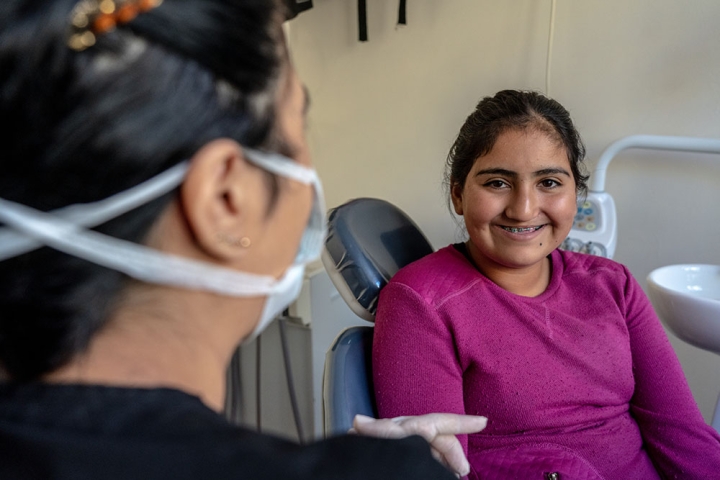Dental and Orthopaedics Care
All children need access to dental care in order to ensure a lifetime with a happy smile.

Dental Care
All children need access to dental care in order to ensure a lifetime with a happy smile. This includes education about a healthy diet and the tools required for daily brushing, flossing, and rinsing. In addition, regular appointments with a dentist to maintain oral health and provide restorative care, when needed, are important
Children born with a cleft are especially in need of dental services. Compared to non-cleft affected children, they are more susceptible to dental anomalies and malposition (crowding, rotation, or tilting) in baby and adult teeth and are at an increased risk for dental caries and gum disease.
Because children born with clefts have unique oral health needs, it is important that they receive dental care services from professionals familiar with cleft lip and/or palate and that their caregivers are closely involved. If their susceptibility to decay is ignored, they may end up losing teeth at an early age. This could cause further complications and can adversely affecting chewing, speaking, sleeping and self-esteem, and even compromise the success of cleft surgeries.
Pre-surgical Infant Orthopaedics
Often referred to as PSIO or NAM (naso-alveolar moulding), this treatment may be recommended for children who have moderate to severe cleft lip and/or palate because it has the potential to decrease clefts’ size and effects on the nose. If recommended by a surgeon and caregivers agree to the treatment, PSIO is applied when a child is one to six weeks of age and continues until primary cleft surgery is completed.
PSIO may include taping across the lip, a palate obturator and/or a device to lift and remodel the cleft nose. It is usually applied by an orthodontist. Caregivers make daily adjustments at home and bring their child for follow-up on a regular basis. Studies suggest that PSIO improves immediate cleft surgery outcomes and decreases the need for future cleft revision surgeries.
Orthodontic Care
Children born with cleft are often in need of orthodontic services. Cleft orthodontics is focused on alignment of the teeth, monitoring facial growth, and the relations of the jaws and occlusion (alignment) of the teeth. It may be required at various stages of development and based on the surgical procedures that the child may need, such as a bone graft or jaw surgery. It is also important to note that there are recommendations on liquid diets during and after orthodontics and surgery. We have "Ongoing Feeding & Nutrition" information and links to helpful recipes.
Learn More
General Information
Policy and Management (American Academy of Pediatric Dentistry)
Smile Train & World Dental Federation
Oral Health in Comprehensive Cleft Care Project
Cleftline: Missing Tooth Fact Sheet
Booklets and Fact Sheets
